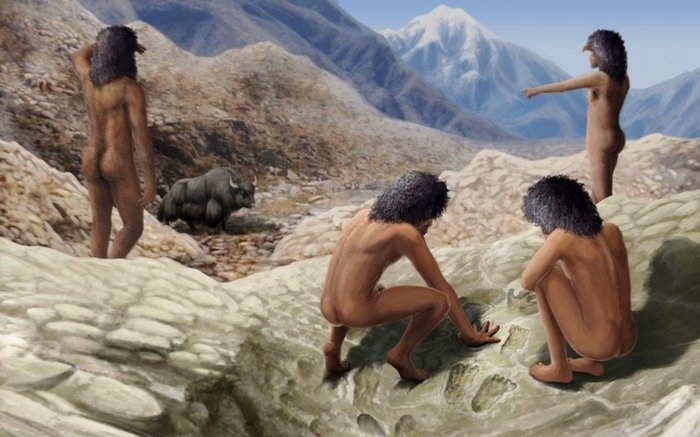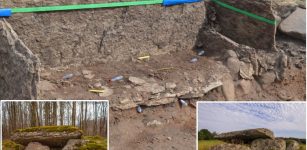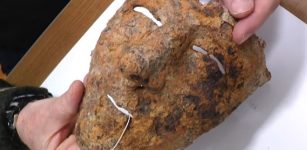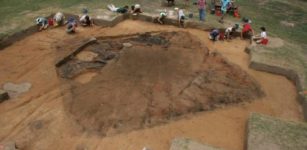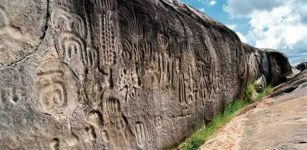Child’s Play: Are Tibetan Hand And Foot Traces The Earliest Example Of Parietal Art?
Conny Waters - AncientPages.com - An international team describes ancient hand and footprints made deliberately which they argue represent art.
Hand shapes are commonly found in prehistoric caves, usually, the hand is used as a stencil with pigment spread around the edge of the hand. The caves at Sulawesi (Indonesia) or at El Castillo (Spain) have some fine examples and are the oldest known to date.
According to a new study, ancient hand and footprints made deliberately which they argue represent art. Crdit: Gabriel Ugueto
We call this type of art parietal art, immobile art if you prefer since you can’t take the cave wall with you when you move on, unlike an ornament.
At Quesang high on the Tibetan Plateau, the team lead by Professor David Zhang (Guangzhou University) found hand and footprints preserved in travertine from a hot spring. Travertine is freshwater limestone, often used as bathroom tiles, and in this case, deposited from hot waters fed by geothermal heat. The limescale that accumulates in your kettle provides an analogy for this. When soft the travertine takes an impression but then hardens to rock.
Five handprints and five footprints appear to have been carefully placed probably by two children judging by the size of the traces. The prints were not left during normal walking and appear to have been deliberately placed. The child making the footprints was probably around 7 years old and the other, who made the handprints, slightly older, at 12 years in age.
Where the children casually playing in the mud while other members of the group took the waters at the hot spring? We do not know, but the team argues that they left a work of art. Prehistoric graffiti if you prefer.
The team dated the travertine using a radiometric method based on the decay of uranium found in the limestone. The age is surprising with the deposit dating to between ~169,000 and 226,000 years ago. This dates from the middle Pleistocene (mid Ice Age) and provides evidence for the earliest human occupation found to date on the Tibetan Plateau. This is quite incredible when you think of the high altitude involved, Quasang has an elevation of over 4200 meters and would have been cold even during an interglacial period. The age also makes this the oldest example of parietal art in the world.
Where the children members of our own species, Homo sapiens, or members of another extinct hominin? We don’t know but potentially they may have been an enigmatic group of archaic hominins referred to as the Denisovans, given other recent skeletal finds on the Plateau.
Should we consider this as art? Well, that depends on one’s definition, but the marks were deliberately made, and have a clear composition. Whatever these humble traces represent, they clearly evoke images of children at high elevations, enjoying a spot of creative play.
Written by Conny Waters - AncientPages.com Staff Writer

